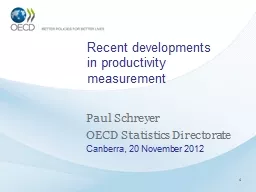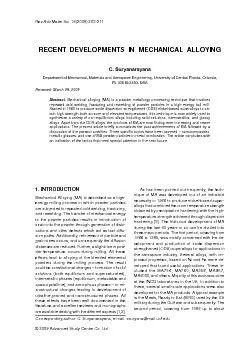PPT-Recent developments in productivity measurement
Author : breezeibm | Published Date : 2020-06-19
Paul Schreyer OECD Statistics Directorate Canberra 20 November 2012 1 Productivity outputinput Issues Identifying measuring and aggregating inputs and outputs
Presentation Embed Code
Download Presentation
Download Presentation The PPT/PDF document "Recent developments in productivity meas..." is the property of its rightful owner. Permission is granted to download and print the materials on this website for personal, non-commercial use only, and to display it on your personal computer provided you do not modify the materials and that you retain all copyright notices contained in the materials. By downloading content from our website, you accept the terms of this agreement.
Recent developments in productivity measurement: Transcript
Download Rules Of Document
"Recent developments in productivity measurement"The content belongs to its owner. You may download and print it for personal use, without modification, and keep all copyright notices. By downloading, you agree to these terms.
Related Documents














